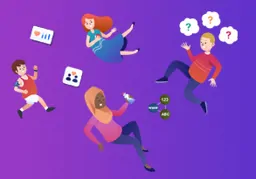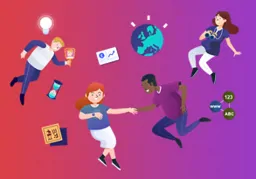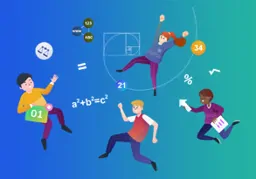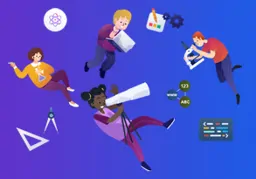AREA OF LEARNING AND EXPERIENCELanguages, Literacy and Communication
Guidance to help schools and settings develop their own curriculum, enabling learners to develop towards the four purposes.
3. Principles of progression
Mandatory
Learners will have varying proficiencies in their languages and, to ensure a robust foundation for second and subsequent languages, early steps (such as grapheme-phoneme correspondence) are revisited in each language.
Increasing effectiveness as a learner
As they move along the continuum of learning, learners will build on basic linguistic skills to develop a capability that enables them to overcome a range of communicative challenges successfully. These include, for example:
- asking increasingly sophisticated questions
- finding information independently
- making evaluative and critical judgements about the ideas and viewpoints and the means of communication in what they hear, read, and view
- using language effectively to convey their own ideas and viewpoints on various topics.
They will develop the language skills necessary to discuss and evaluate their learning in languages.
Increasing breadth and depth of knowledge
Progression in this Area is represented as a coherent continuum. The learner grows holistically in their understanding and purposeful use of languages, literacy and communication when listening and reading, when speaking and writing and when interacting and mediating in a wide range of contexts.
Learners develop an increasingly sophisticated understanding of linguistic concepts that support the more conscious and self-aware development of skills to communicate effectively through speech, writing, gestures, images or other media.
They also progress in their breadth and depth of conceptual knowledge by encountering ideas in languages and literature, initially in more personal and local contexts and moving as they progress to connect with more complex communications in a multilingual world. Learners thus acquire a gradually more nuanced understanding of different viewpoints and increasing command of the skills needed to interpret, evaluate, articulate and respond to differing perspectives.
Deepening understanding of the ideas and disciplines within Areas
Progression in this Area is a continuum of increasingly complex engagement with ideas and communicative purposes and of development of language awareness. These are demonstrated in:
- responding to communications when listening, reading, or receiving language in other ways
- producing them when speaking and writing or through other means of communication.
Drawing on a learner's whole linguistic repertoire – however uneven that may be – enables them to progress in all languages. Understanding linguistic concepts in the language of instruction, for example, can be applied to learning a new language, which facilitates progression in that language as well as improving understanding of the way in which their own languages work. While learners may be at different points of progression in different languages, a focus on plurilingualism allows them to call upon their knowledge of a number of languages to make sense of a spoken or written text, whatever their command of that language, and to increasingly understand and learn from the relationships between different languages.
Refinement and growing sophistication in the use and application of skills
Progression in the refinement and sophistication of skills moves from literal and simple communicative purpose to more abstract, inferred or implied and nuanced levels of meaning with more complex purposes. Oral language precedes and underpins pre-literacy skills. Learners gradually develop greater awareness of language and more sophistication in using this awareness to achieve intended purposes in interpreting and producing communications in speech or writing or through other means.
For younger learners the acquisition of language follows the same sequence as for older learners, although the speed at which it does so can vary considerably. As learners experience, engage with, understand and apply increasingly complex ideas and language awareness, accuracy and fluency in using communication skills grow.
Progression in this Area is also seen in the production of language. As learners become more accomplished, they can adapt and manipulate language to communicate effectively to a range of different audiences. This allows learners to form and develop strong relationships and the confidence to use their voice in society.
Second language learners may use formulaic language with few mistakes initially and, as they progress and when being more ambitious and spontaneous in their use of language, they may appear to make more mistakes. This intrinsic part of successful language learning leads to becoming more fluent and accurate language users. Second language or bilingual learners may not necessarily show the same pattern of linguistic progression as first language learners.
Making connections and transferring learning into new contexts
Progression in this Area has a significant inter-relationship with the learning in all other areas. The learner moves forward along the progression continuum partly through exposure to rich challenges and resources offered by other Areas. The thinking needed to understand and to communicate all learning is closely related to that which enables learners to develop receptive, interpretive and expressive language skills. They progress in the languages, literacy and communication set out in this Area alongside the development of disciplinary literacy in the other curriculum Areas.
The ability to transfer existing knowledge and skills into new contexts is an integral part of progression in this Area. This includes the social and cultural aspects of language. As learners develop an understanding of additional languages, patterns of language use are identified, adapted and applied in new contexts. Modes of communication are adapted for different audiences, and to different disciplinary contexts. Skills in learners’ first and second languages enable learning in subsequent languages. As learners progress, they will be able to make links within and between ways of communicating, making good choices about effective methods of communication.







